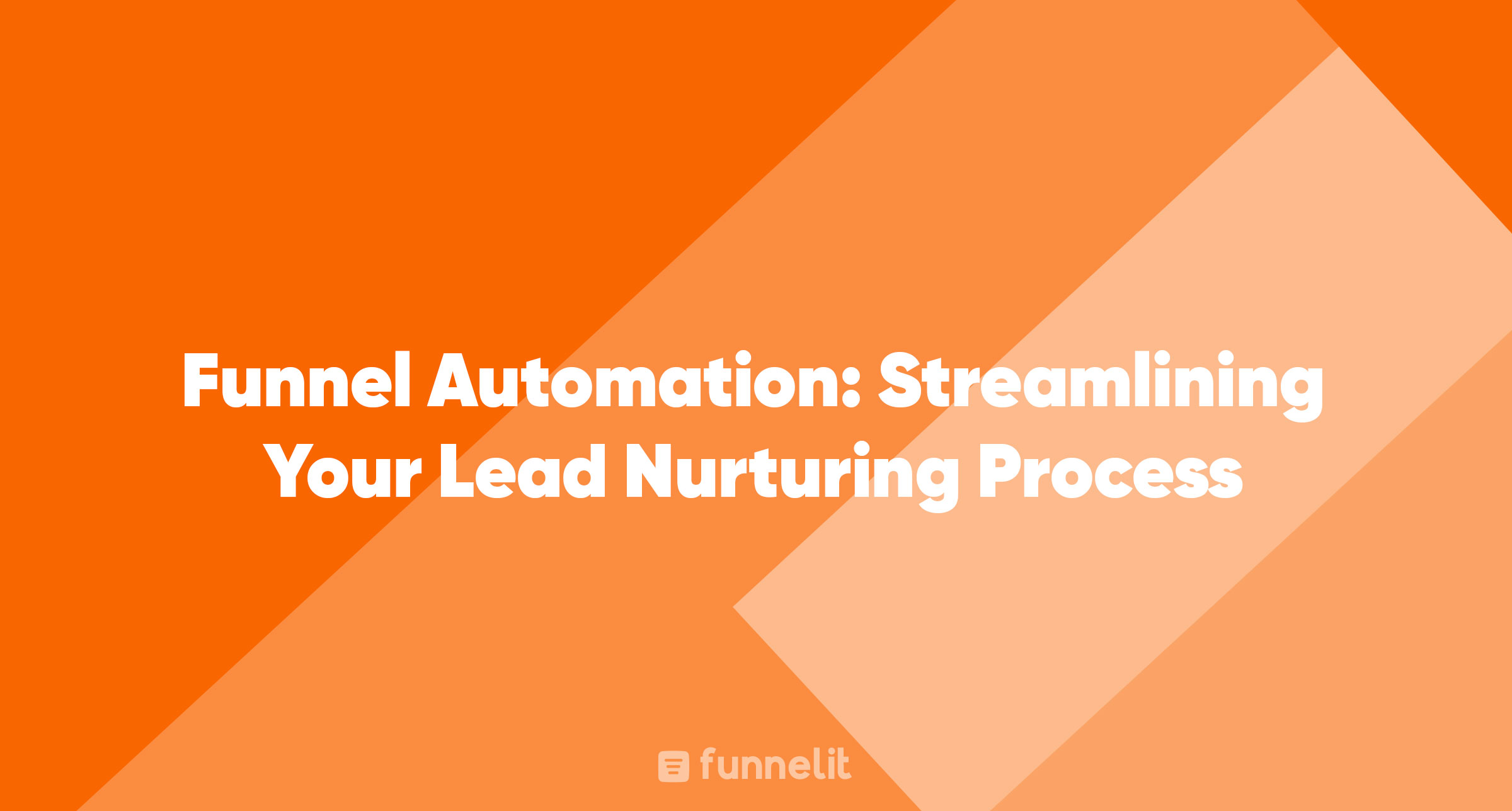Funnel automation is the practice of using technology to streamline and automate various stages of the lead nurturing process. It involves leveraging CRM (Customer Relationship Management) software and marketing automation tools to capture, qualify, and nurture leads throughout their journey in the sales funnel. By automating repetitive tasks and using data-driven insights, you can optimize your lead nurturing efforts and improve conversion rates.
The Benefits of Funnel Automation
- Time and Resource Efficiency: Manual lead nurturing processes can be time-consuming and resource-intensive. With funnel automation, you can automate repetitive tasks, such as lead scoring and email campaigns, freeing up valuable time for your sales and marketing teams.
- Improved Lead Qualification: Automation tools allow you to implement lead scoring models that prioritize leads based on their level of engagement and interest. This helps your sales team focus their efforts on high-quality leads with a higher likelihood of conversion.
- Personalized Lead Nurturing: Funnel automation enables you to deliver personalized content and messaging to your leads based on their behavior, demographics, and interests. This personalized approach builds trust and enhances the customer experience, increasing the chances of conversion.
- Streamlined Sales and Marketing Alignment: Funnel automation bridges the gap between your sales and marketing teams. By providing real-time data and insights, it promotes better communication, alignment, and collaboration, resulting in a more efficient lead nurturing process.
- Data-Driven Decision Making: Automation tools provide valuable data and analytics that help you track and measure the effectiveness of your lead nurturing efforts. By analyzing this data, you can identify areas for improvement, optimize your strategies, and make data-driven decisions to drive better results.
Implementing Funnel Automation: Step-by-Step Guide
Now that we understand the benefits of funnel automation, let's explore how to implement it effectively in your lead nurturing process. Follow these steps to streamline your lead nurturing efforts and maximize your conversion rates:
Step 1: Define Your Target Audience
Before diving into automation, it's crucial to have a clear understanding of your target audience. Define their demographics, pain points, and interests. This information will guide your automation strategies and help you deliver personalized content that resonates with your leads.
Step 2: Choose the Right Automation Tools
Select the right automation tools that align with your business goals and requirements. Consider CRM software, marketing automation platforms, and lead scoring tools that integrate seamlessly with your existing systems. Evaluate different options and choose the ones that offer the features and functionality you need.
Step 3: Capture and Qualify Leads
Implement lead capture mechanisms such as contact forms, landing pages, and chatbots to collect valuable lead information. Leverage automation tools to automatically track and qualify leads based on predefined criteria, such as engagement level, demographics, and behavior. This ensures that you focus your efforts on leads with the highest potential for conversion.
Step 4: Implement Lead Nurturing Workflows
Create lead nurturing workflows that deliver targeted and personalized content to your leads at different stages of the sales funnel. Use automation tools to automate email campaigns, drip sequences, and follow-up processes. Tailor your messaging based on lead behavior, interests, and pain points to nurture them effectively.
Step 5: Lead Scoring and Segmentation
Implement lead scoring models to prioritize leads based on their level of engagement and likelihood to convert. Assign scores to leads based on their interactions with your content, website, and emails. Segment your leads into different groups based on their scores, demographics, and behavior to deliver more targeted and relevant content.
Step 6: Monitor and Analyze Results
Regularly monitor and analyze the performance of your lead nurturing campaigns. Track key metrics such as open rates, click-through rates, conversion rates, and ROI. Use this data to identify areas for improvement, optimize your automation strategies, and make data-driven decisions to enhance your lead nurturing process.
Step 7: Continuous Improvement
Lead nurturing automation is an ongoing process. Continuously evaluate and refine your automation workflows based on the insights and feedback you gather. Test different approaches, messaging, and tactics to optimize your results. Stay up to date with industry trends and best practices to ensure your automation strategies remain effective.
Funnel Automation Tools and Platforms
There are numerous tools and platforms available in the market that can help you implement funnel automation effectively. Here are a few popular options:
- HubSpot: A comprehensive CRM and marketing automation platform that offers robust automation features and integrations.
- Marketo: An enterprise-grade marketing automation platform that provides advanced lead nurturing capabilities and analytics.
- ActiveCampaign: A versatile email marketing and automation tool that offers lead scoring, segmentation, and personalized messaging.
- Pardot: A Salesforce-owned marketing automation platform that integrates seamlessly with Salesforce CRM for seamless lead management.
Best Practices for Funnel Automation
To ensure the success of your funnel automation efforts, keep these best practices in mind:
- Segmentation and Personalization: Tailor your content and messaging to specific segments of your audience. Personalize your emails and communications based on lead behavior, interests, and preferences.
- Lead Scoring: Continuously review and refine your lead scoring criteria to ensure that you prioritize the most qualified leads for your sales team.
- Testing and Optimization: Regularly test different approaches, messaging, and tactics to optimize your lead nurturing workflows. Monitor the performance of your campaigns and make data-driven improvements.
- Sales and Marketing Alignment: Foster collaboration and communication between your sales and marketing teams. Ensure both teams are aligned on lead nurturing strategies and objectives.
- Continuous Learning: Stay updated with industry trends, best practices, and new automation tools. Attend webinars, read industry blogs, and network with other professionals to continuously enhance your funnel automation expertise.
Conclusion
Funnel automation is a game-changer for businesses looking to streamline their lead nurturing process and improve conversion rates. By leveraging automation tools and following best practices, you can effectively capture, qualify, and nurture leads throughout their journey in the sales funnel. Embrace funnel automation and unlock the full potential of your lead nurturing efforts.
